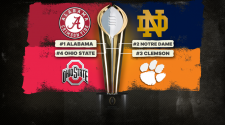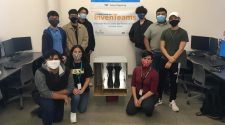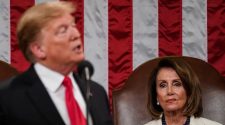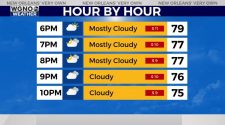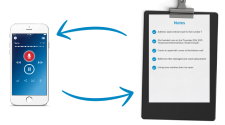The Division of Economic and Health Policy Research conducts independent research on competition in health insurance markets. It has also begun conducting research on pharmacy benefit manager (PBM) markets.
A key question of public policy is whether health insurance markets are competitive or whether insurers have market power, which can harm consumers and health care providers. A useful indicator of competition and market power is market concentration. The U.S. Department of Justice and the Federal Trade Commission examine concentration in their evaluation of proposed mergers between firms.
One of the division’s most significant efforts is the annual Competition in Health Insurance (CHI) study. This annually updated study is the only publication of its kind. It is based on an analysis of unique enrollment data from a single data source for health insurers in all states and metropolitan statistical areas (MSAs) of the U.S. The division has also conducted analyses of past and proposed mergers among health insurers.
This year the division began conducting research on PBM markets. Using unique enrollment data on commercial drug coverage lives from the same data source used for its CHI study, the division has published a paper as part of its Policy Research Perspectives (PRP) series that aims to shed light on this understudied market.
Competition in Health Insurance, 2021 update
Competition in Health Insurance, 2021 update
The 2021 update to Competition in Health Insurance: A Comprehensive Study of U.S. Markets (PDF) presents 2020 data on the degree of competition in commercial health insurance markets. It is intended to help identify areas where consolidation involving health insurers may cause anticompetitive harm to consumers and providers of care.
The study reports the two largest insurers’ market shares and the concentration levels (HHIs) for all state- and MSA-level markets in the U.S.
Key findings from the 2021 update include:
- Seventy-three percent (280) of MSA-level markets were highly concentrated (HHI>2,500) in 2020, up from 71% in 2014.
- The average HHI across MSA-level markets was 3494 in 2020.
- Fifty-seven percent of markets experienced an increase in the HHI between 2014 and 2020. Among those markets, the average increase was 531 points.
- Of the markets that were not highly concentrated in 2014, 26% experienced an increase in the HHI large enough to place them in the highly concentrated category by 2020. Another 39% also had an increase, though not large enough to make them highly concentrated.
- In 91% (348) of MSAs, at least one insurer held a commercial market share of 30% or greater, and in 46% (178) of MSAs, one insurer’s share was at least 50%.
- A Blue Cross Blue Shield (BCBS) affiliate had the largest state-level market share in 40 states.
- A BCBS affiliate had the largest MSA-level market share in 81% (311) of MSAs.
- Anthem had the largest MSA-level market share in 21% (80) of MSAs.
- At the national level, UnitedHealth Group was the largest commercial health insurer in the U.S. and Centene was the largest insurer in the exchanges.
Maps from the study
Competition in Commercial PBM Markets and Vertical Integration of Health Insurers with PBMs
Competition in Commercial PBM Markets and Vertical Integration of Health Insurers with PBMs
Using novel 2020 data on commercial drug coverage lives based on five PBM functions, this PRP titled Competition in Commercial PBM markets and Vertical Integration of Health Insurers with PBMs (PDF) presents a descriptive analysis of PBM markets and the provision of PBM services to health insurers. It reports the ten largest commercial PBMs and drug insurers in the U.S. at the national level. The paper also presents the two largest PBM market shares and the concentration levels (HHIs) for all state- and MSA-level markets. Finally, it quantifies the extent of vertical integration of health insurers with PBMs.
Key findings from the paper include:
- At the national level, the top four PBMs provide rebate negotiation for a collective 66% of commercial drug lives. The results are similar for retail network management and claims adjudication.
- Of the top 10 PBMs that provide rebate negotiation, six are used exclusively by one insurer or set (Blues) of insurers.
- For the other two PBM functions—formulary management and benefit design—about 37% of drug lives are managed by insurers “in house.”
- The average HHIs in state-level and MSA-level rebate negotiation markets are 3746 and 4103, respectively. The numbers are similar for retail network management and claims adjudication markets.
- At the national level, 69% of commercial drug lives are with a vertically integrated insurer. Although the averages across states and MSAs are slightly lower (63% and 65%), there is wide variation among states and MSAs.
Research on the Anthem-Cigna and Aetna-Humana mergers
Research on the Anthem-Cigna and Aetna-Humana mergers
AMA conducted analyses (see below) of the likely impact that the blocked Anthem-Cigna and Aetna-Humana mergers would have had on commercial markets and of the Aetna-Humana merger on Medicare Advantage markets. The analyses found that each of the mergers would have likely been anticompetitive in numerous markets across the U.S.
Read more about the AMA’s successful efforts to block the Anthem-Cigna and Aetna-Humana mergers.
Research on the UnitedHealth-Sierra Health merger
Research on the UnitedHealth-Sierra Health merger
This paper (PDF) examines the association between health insurance market concentration and prices. It is a case study of the 2008 merger between UnitedHealth Group and Sierra Health Services.
It found that health plan premiums in Nevada markets increased by 13.7% after the merger. The findings suggest that the merging parties exploited the market power gained from the merger.


